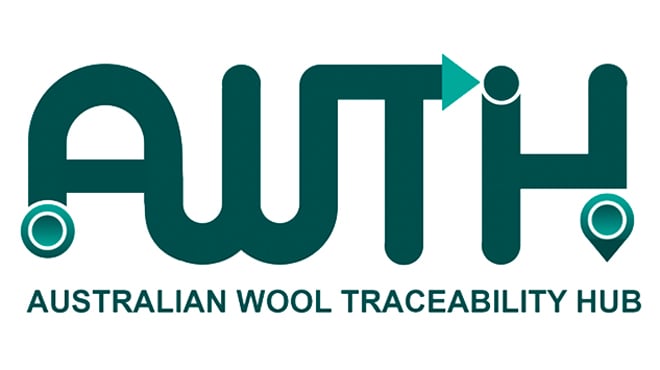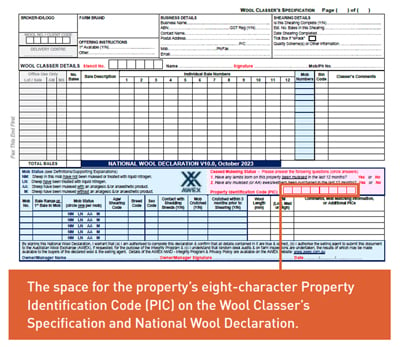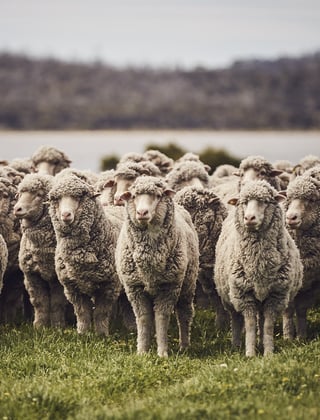Australian Wool Traceability Hub

The Australian Wool Traceability Hub is a new and essential tool for the Australian wool industry to get ahead of the curve when it comes to Australian wool’s Emergency Animal Disease (EAD) response plan as well as end-to-end commercial traceability from farm to first stage processor.
An industry owned and led initiative, the Australian Wool Traceability Hub (the Hub) is scheduled to be officially launched by mid-year.
The Hub is being developed with whole of industry cooperation and input from Australian wool industry organisations: Wool Industries Australia (WIA), Australian Wool Testing Authority (AWTA), Australian Wool Innovation (AWI), Australian Wool Exchange (AWEX), National Council of Wool Selling Brokers of Australia (NCWSBA), Australian Council of Wool Exporters and Processors (ACWEP) and WoolProducers Australia (WPA).
The nation’s wool testing authority AWTA will manage and operate the Hub on behalf of the industry, overseen by WIA.
The purpose of the Hub is to strengthen the confidence in, reliability and efficiency of the transfer of key information within the Australian wool supply chain from woolgrowers to first stage processors.
Brands and consumers are increasingly interested in the provenance of products, and traceability is now an essential part of producing a raw material to be consumed by a market worldwide. By collecting key information along the wool supply chain, the Hub aims to achieve traceability in the Australian wool industry and ultimately be able to help respond to provenance requests from the market. The platform will be available to woolgrowers, sellers and buyers who wish to use it to manage wool traceability.
The Hub will initially focus on helping the industry respond to potential biosecurity threats. A vital part of managing any EAD outbreak is being able to track and locate any wool which may have come from contaminated sites, ranging from the farm to the wool store, wool dump or shipping containers and all the way to processing locations.
It is anticipated that more than 90% of bales will be able to be traced using the Hub by July 2025.
Property Identification Code
The woolgrower’s Property Identification Code (PIC) will be an essential part of the Hub. A PIC is an eight-character alphanumeric code allocated by state/territory authorities to livestock producing properties. If you own sheep, you require a PIC.
The Hub will coordinate PICs, matching Test Certificates, Combinations and Delivery orders, enabling a rapid and thorough response and quarantine should an outbreak happen, with the goal of re-establishing trade in the shortest possible timeframe.
Brokers and merchants started voluntarily transmitting PIC details to AWTA via its Electronic Data Interchange (EDI) system for central storage approximately 18 months ago. The proportion of lots with a declared PIC grew very quickly initially, but has recently plateaued. As at March 2024 the national PIC adoption rate is about 50%, which is significantly lower than what is required to adequately deal with an EAD event. In some states this figure is still critically low.
Moving forward, the goal is to receive a 100% adoption rate which will enable a rapid response to help minimise the inevitable trade disruptions that would follow in the event of an EAD incursion.
Woolgrowers are strongly encouraged to make sure they include their PIC on their Wool Classer's Specification and National Wool Declaration.

“The PIC is the starting point for the whole traceability pathway: where was this wool produced? The wool industry is competing for market share, and to be a viable competitor in that market, we must confidently be able to start the whole process by proudly declaring where the wool came from. The PIC does that,” said President of the NCWSBA, Rowan Woods.
“For the Australian Wool Traceability Hub to be a success, it needs all producers to advise their PIC. There is a lot to gain, and even more to lose. This is no longer an option. This should be a requirement.”
Check your PIC details are up to date: Over the years, many landholders might not have not updated their contact details for their PIC, such as for changes in business partner, parents no longer farming and farm succession. Some addresses still show as RSD which means mail may not be delivered and the PIC could be disbanded without the landholder knowing. Many people have not added mobile phone details or email addresses to their PIC information.
You can update your contact details or apply for a PIC by contacting your state authority or Department of Agriculture.
It is important to note that sellers’ (brokers/woolgrowers) information is protected under the existing AWTA data sharing agreement. Sellers can opt in or out of sharing test information (which includes PIC) to the Hub, and once launched, can also request a data purge from the Hub at any time.
More information: www.awth.com.au
This article appeared in the June 2024 edition of AWI’s Beyond the Bale magazine. Reproduction of the article is encouraged.














